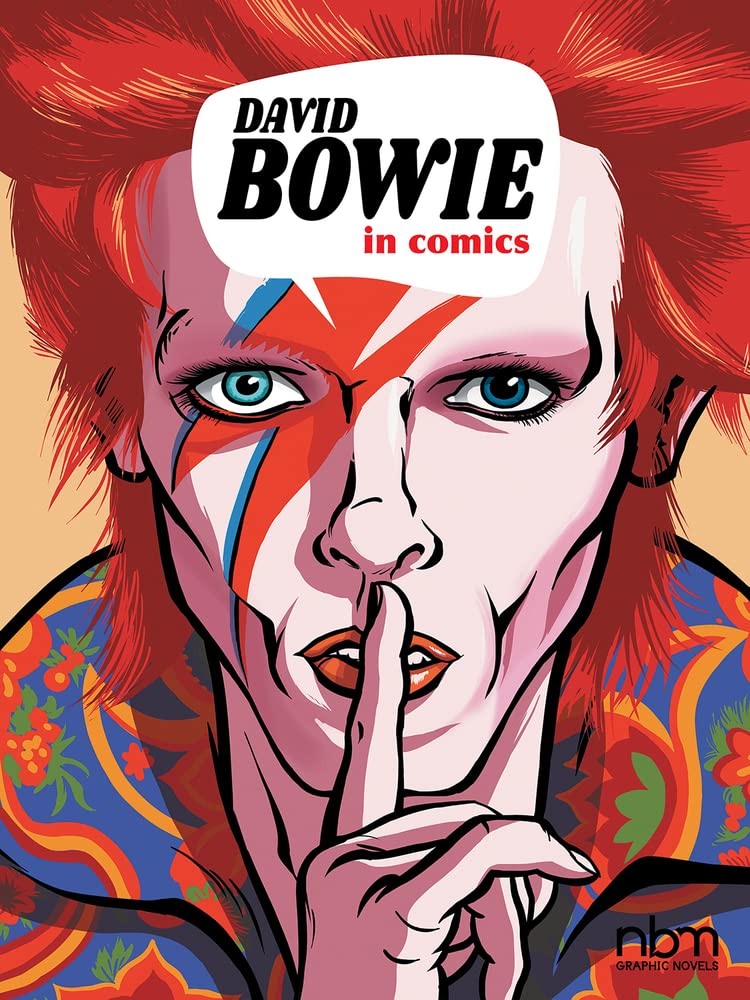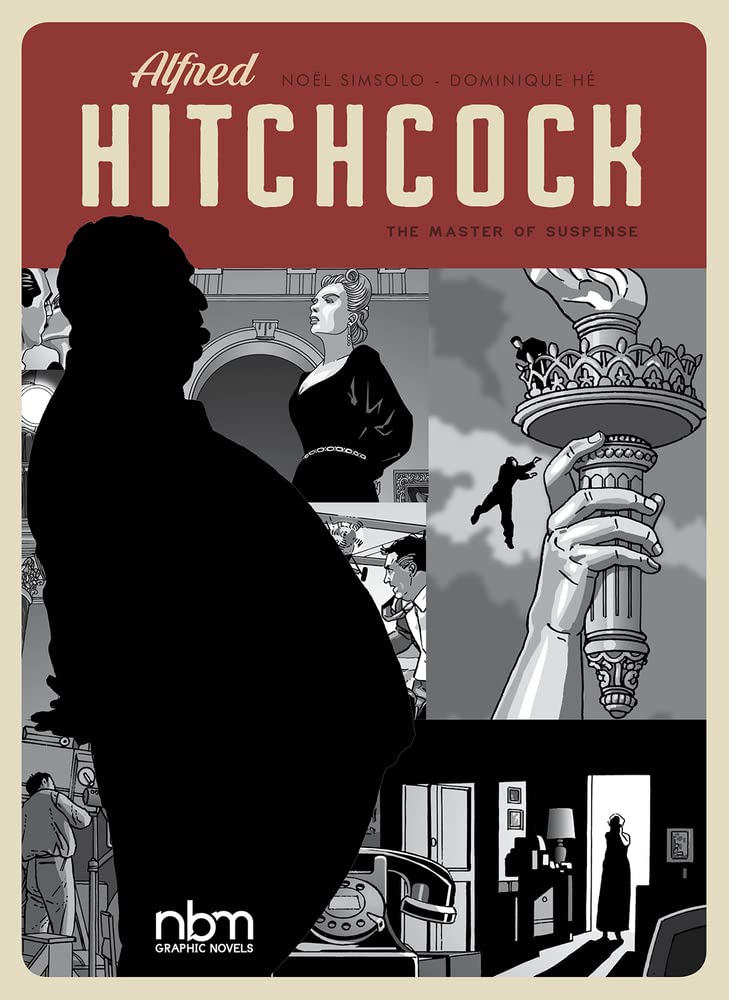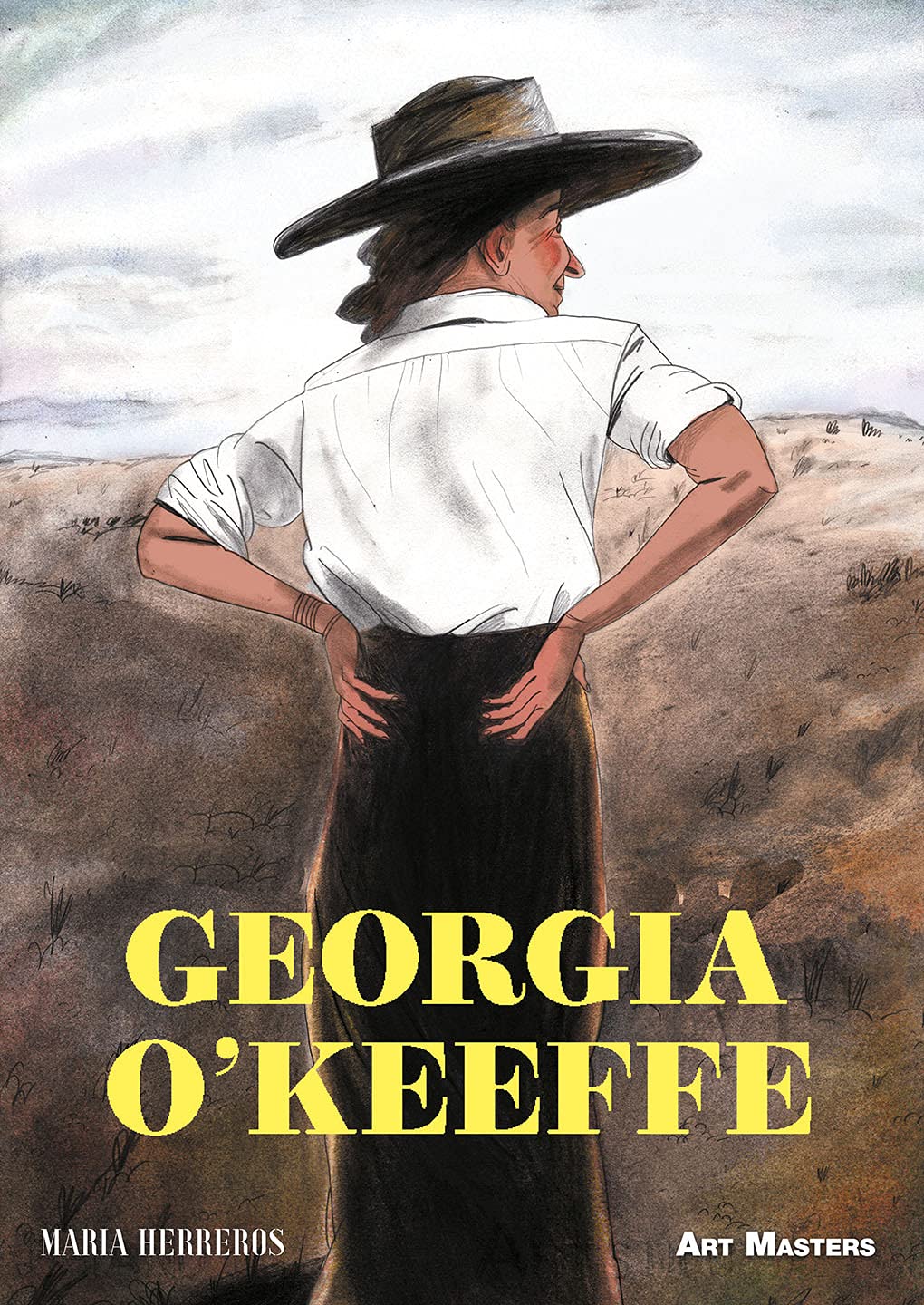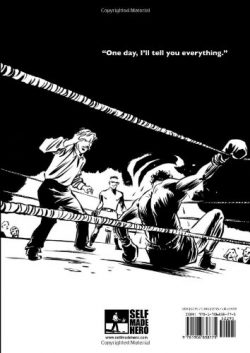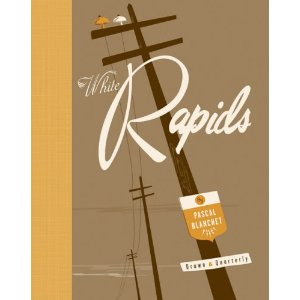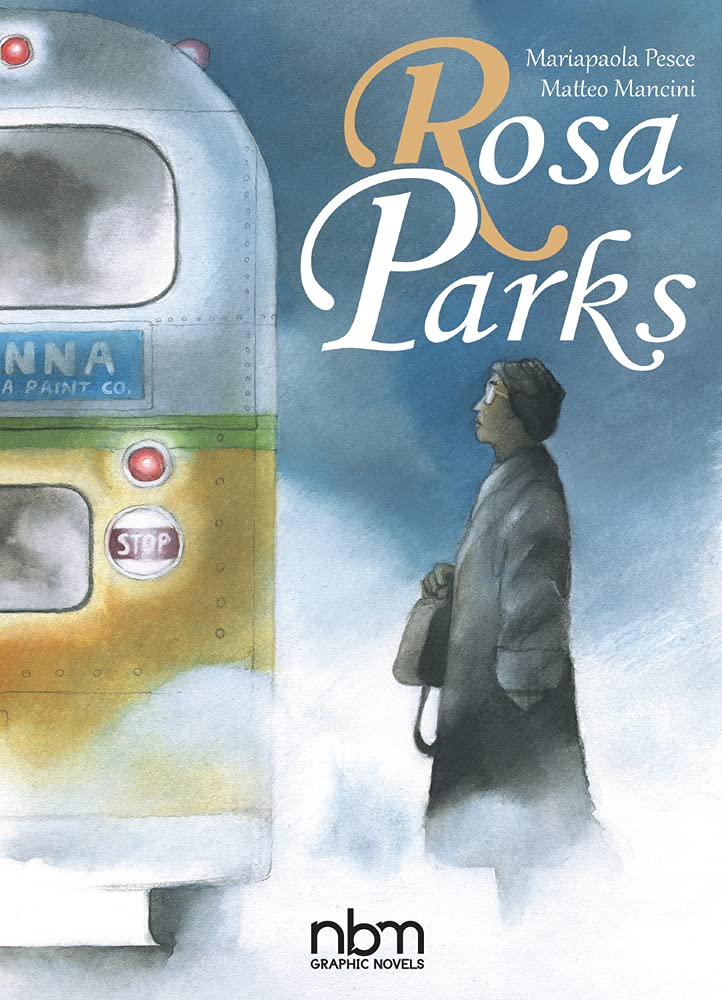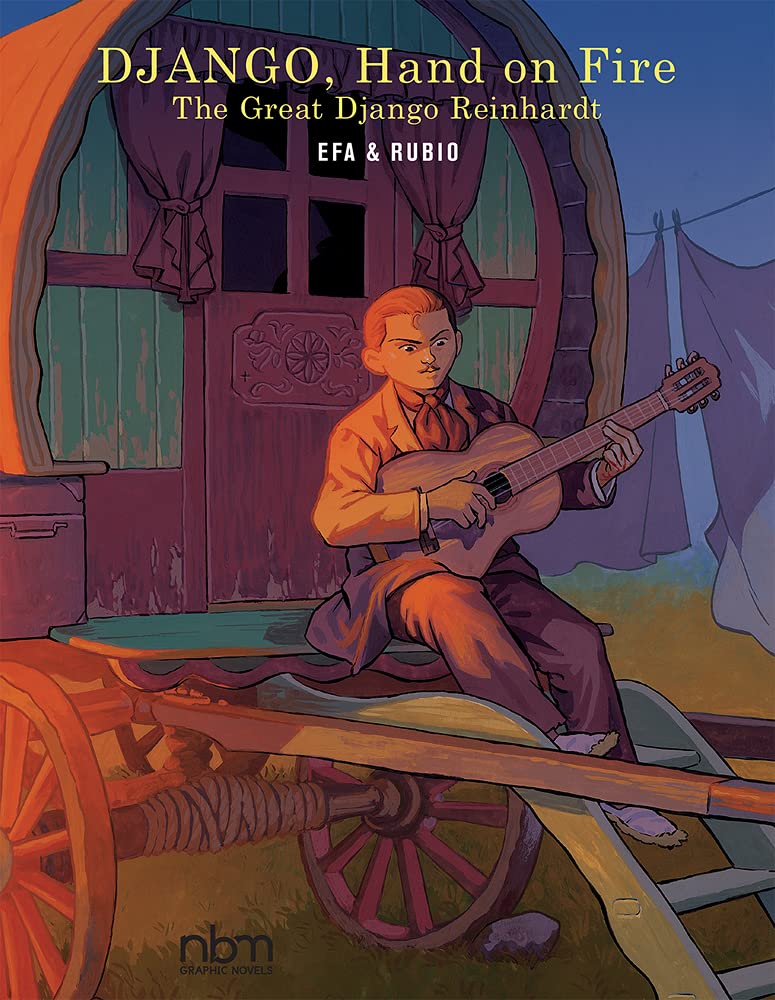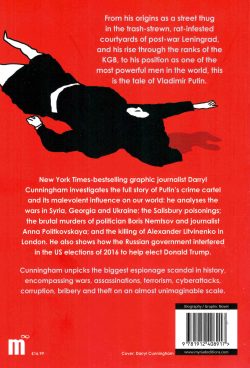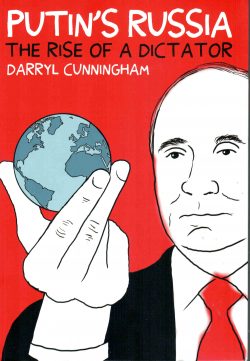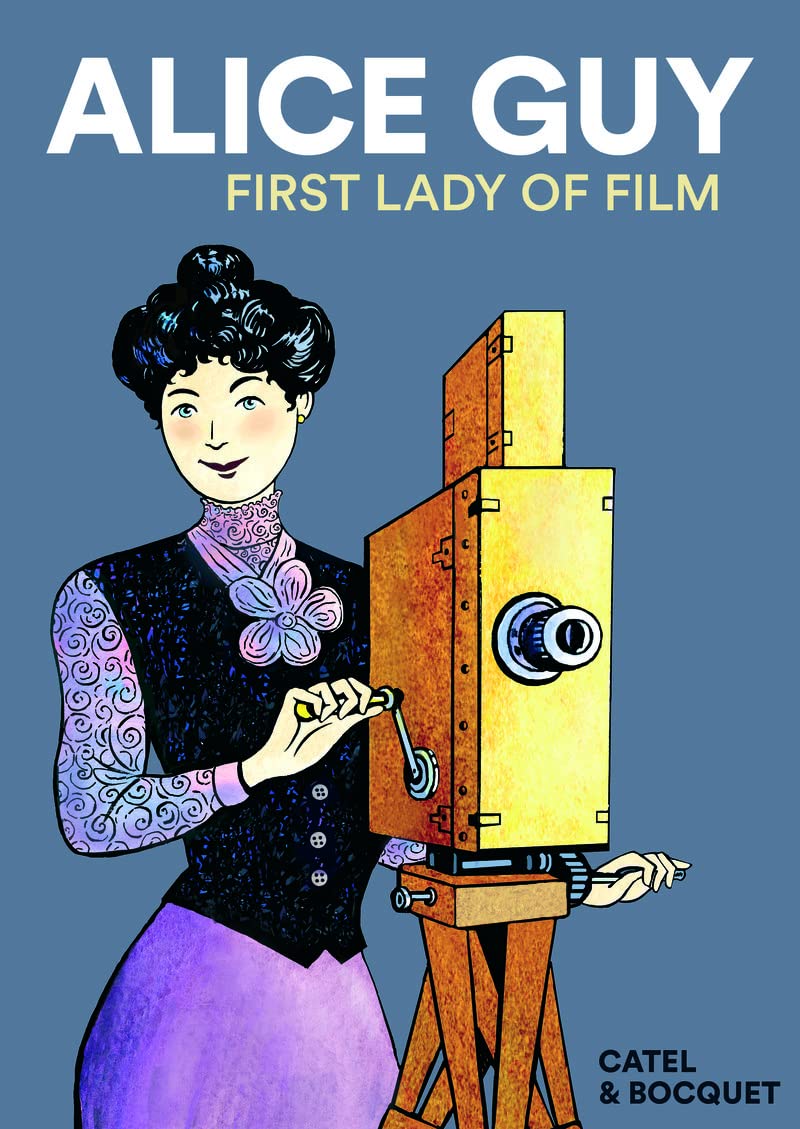
By Catel & Bocquet, translated by Eward Gauvin (SelfMadeHero)
ISBN: 978-1-914224-03-4 (TPB/Digital edition)
I’ve reached a ripe – really, really ripe – old age and only learned one true thing: Men should not be allowed to be in charge of history. We have a very nasty and juvenile tendency to balls it up and – I’m going to say – “forget” stuff that women actually did.
I’m not going to embarrass us all with a list of female accomplishments and discoveries excised from the record, but I might wax quite a bit wroth whilst reviewing this superb graphic biography that joins the movement to redress the wrongs done to an extraordinary talent who shaped the primary entertainment medium of the last century and was then made to be forgotten…
Alice Ida Antoinette Guy-Blaché was born on July 1st 1873 and is officially the world’s first female Film Director as well as. by most metrics, the first person to add narrative to the nascent scientific diversion and tent show phenomenon of Cinema. Where once the spectacle of objects moving, ordinary people walking about and trains entering stations was the sum total of creative endeavour, she added storytelling and birthed a whole new world.
However, her legacy was almost erased in the years after she stopped working. At one stage none of her films were officially registered anywhere and to this day no complete archive of her works exists or even a complete record of how many motion-pictures she made…
A well-travelled, well-read daughter of educated parents (her father owned bookshops and a tri-national publishing house in Chile, before war and natural disasters destroyed their fortune), Alice Guy’s connection to photography began in 1894, when she joined a photographic instruments business that would become the mighty Gaumont Cinema empire. She started as a stenographer (possibly the first ever in France), and quickly – pretty much sans any acknowledgement – became company secretary, business manager and – when the explosion of individual technical discoveries converged to make a scientific oddity into an unexpected entertainment phenomenon – the company’s foremost maker of films for public consumption.
Initially indulged and soon eagerly supported and encouraged by (most of) the men in charge Alice Guy wrote the first scripted films, beginning in 1996 with a charming fantasy about where babies come from.
La Fée aux Choux (The Fairy of the Cabbages or, in at least two later remakes benefitting from her technological and narrative inventions, The Birth of Children) was huge hit with the public and resulted in her scripting and/or directing hundreds of further films of varying lengths. A passionate pioneer, she blended strong, visually arresting narratives and constant examination of social inequity and inequality with cutting edge and innovative technology, art direction and set making.
At the turn of the century, Guy made many dozens of sound-enhanced films in the now all-but forgotten “Chronophone” system (synchronising phonographic recordings with projected film decades before 1927’s “Talkies” revolution); championed and perfected location shooting; devised new special effects; instituted purpose-built studios and specialised sets and experimented with colour-tinted film.
In 1906, Guy invented historical/biblical epics and chapter serials with La vie du Christ (The Life of Christ): a 25 part extravaganza employing 300 actors and in 1912 – after moving to America to found her own studio Solax – made the first film with an all-black cast.
Minstrel comedy A Fool and his Money would have had only one African American character and loads of white guys in traditional and popular “blackface”, but when her established white American actors refused to work beside even one actual negro – vaudeville comedian James Russell – she let them all go and hired Russell’s fellow performers instead…
In 1913, she directed The Thief: the first script sold by Harvard student William Moulton Marston, eventual polygraph pioneer and creator of Wonder Woman…
Guy also created groundbreaking feminist satires, and used her films to explore women’s rights and champion birth control politics. She made international dance and travelogue films in incredibly successful “one-reelers” dedicated to sharing the wonders of terpsichorean movement across borders, and always looked for the next new thing, but her rising star burned out after moving to America and ending her marriage to a faithless man who speculated away all their money amidst the chaos of changing economic systems, Spanish Flu, and the Great Depression. Sounds like a classic movie plot, right?
Guy directed her last film – Tarnished Reputations – in 1920, and began an inexorable descent into poverty and obscurity, spending her days seeking to find copies of any of the hundreds of features she had created.
Alice Guy died in 1968, just as other, more appreciative truth-seekers who had taken up her later-life struggle to re-establish her place in history were finally making headway and returning her to the annals of cinema history.
Written after WWII, her autobiography had languished on a publishers desk for decades before finally being posthumously published in 1976. Since then, a veritable Who’s Who of academics, historians and industry greats have toiled to overturn her erasure. Alice is now getting the acclaim and appreciation she earned incognito. As always, it appears to be one more case of Too Little, Too Late…
All that achievement, accomplishment, disillusionment and ultimate abandonment by her own colleagues and the public she invisibly captivated has been given a sublimely moving human face in this chronological, episodic, dramatized narrative from award-winning graphic novelist Catel Muller (Ainsi soit Benoîte Groult, Adieu Kharkov, Lucie s’en soucie, Le Sang des Valentines, Kiki de Montparnasse, Joséphine Baker, Olympe de Gouges) and crime novelist, screenwriter, biographer and comics writer José-Louis Bocquet (Sur la ligne blanche, Mémoires de l’espion, Panzer Panik, Kiki de Montparnasse, Joséphine Baker, Olympe de Gouges, Anton Six). Here, Alice’s life is traced from cradle to grave in black-&-white “shorts”, concentrating on her family life and relationships, with her astounding energy, creativity and catalogue of innovations and successes acting as a mere spine to form an impression of the woman whose guiding motto was always “be natural”.
Entertaining, engaging and subtly informative, the book is supplemented by a vast supporting structure of extras, beginning with a heavily illustrated and highly informative ‘Timeline for Alice Guy’ incorporating pivotal events in the invention of cinema. That’s further augmented by ‘Biographical Notes’: 32 character portraits in prose and sketch form of the historical figures who also feature in this epic saga, as well as a Filmography of the movies researchers have since confirmed and acknowledged, and a Bibliography of films, documentaries and books about her.
If you love film, or comics, justice triumphant or just great stories, you really need to set some records straight and read this book.
© Casterman 2021. All rights reserved.

